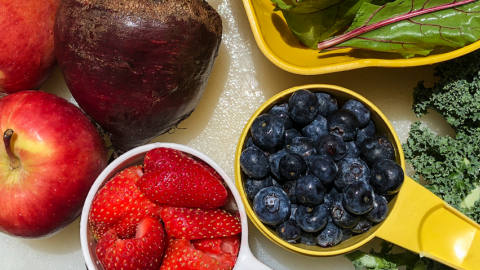USDA, Economic Research Service (ERS) develops and monitors indicators of individual, household, and market-level food consumption, prices, expenditures, food marketing costs, and farm-to-retail price spreads. Food choices are influenced by prices and income, as well as other factors. ERS has acquired proprietary data for use in food economics research.
ERS produces key data products and conducts research on:
- Proprietary Data: These data are used to enable research on a variety of food-related USDA issues (e.g., food access, health, and security). Additional information is available on the Using Proprietary Data page.
- Fruit and Vegetable Prices: The cost of fruits and vegetables, estimating average prices for over 150 commonly consumed fresh and processed fruits and vegetables, using 2013, 2016, 2020, and 2022 retail scanner data from Circana (formerly Information Resources, Inc. (IRI)).
- Food Expenditure Series: The Food Expenditure Series is a comprehensive data set that measures the value of the U.S. food system by quantifying the value of food acquired in the United States at both the national and State levels. Interactive Chart: Food Expenditures provides interactive data visualizations for users.
- Food Dollar Series: The Food Dollar Series measures annual expenditures by U.S. consumers on domestically produced food. This data product is composed of three primary series—the marketing bill, the industry group bill, and the primary factors bill—that describe different aspects of the food supply chain.
- Food Price Outlook: The Food Price Outlook provides food price data and forecasts the change in prices of the Consumer Price Index (CPI) and Producer Price Index (PPI) for food. The Food Price Environment Interactive Visualization provides interactive data visualizations for users.
- Price Spreads from Farm to Consumer: Price spreads compare the prices paid by consumers for food with the prices farmers receive for their corresponding commodities. Highlights and Interactive Charts provide interactive data visualizations for users. See also the Meat Price Spreads data product.
- Purchase to Plate: The Purchase to Plate Suite links USDA nutrition databases with grocery scanner data with two primary purposes: (1) Estimate prices for foods found in USDA’s What We Eat in America (WWEIA), the dietary component of the National Health and Nutrition Examination Survey (NHANES), and (2) Estimate nutrition information for a basket of grocery products.
- Food-at-Home Monthly Area Prices: The Food-at-Home Monthly Area Prices (F-MAP) product provides retail food price data over time and across areas. The F-MAP includes monthly average unit prices and price indexes for 90 food groups across 15 geographic areas.



